- File size:
- 30 MB
- Date added:
- Dec 07, 2023 | Last update check: 1 minute ago
- Licence:
- Trial
- Runs on:
- Revit 2016 / 2017 / 2018 / 2019 / 2020 / 2021 / 2022 / 2023 / 2024
Tally for Revit helps you conduct whole-building LCA during design, compare design options and select building materials based on its environmental impact. With whole-building LCA you can assess the embodied environmental impact of your entire building, and benchmark your impact throughout design. Analyze and compare LCA impacts and ingredients of materials and assemblies, including information from manufacturer EPDs (Environmental Product Declarations). You can define relationships between BIM elements in a Revit model and construction materials from the Tally database. These relationships are used to quantify environmental impacts across several categories, such as embodied energy and GWP (global warming potential).
You can use Tally for Revit together with EC3 tool. Typical workflow is to use Tally in the design phase and EC3 tool in the construction phase.
Features:
- Automatically pull the materials from your project. Tally uses modeled components from Revit and applies them to numbers from actual construction materials such as embodied carbon, CO2 emissions from transportation as well as it uses the building materials to calculate the lifespan of the building.
- Fully compatible with many Revit categories. This includes Ceilings, Curtain Wall Mullions, Curtain Panels, Doors, Floors, Railings, Roofs, Stairs, Structural Foundations, Structural Framing, Structural Columns, Walls, and Windows.
- Works with linked models. Tally saves information (material definitions you build) in your Revit model’s family types. So you can only edit the Tally definitions of the model that you have open. If you want to edit the Tally definitions for a linked model, you must open that model directly, save it, and reload it.
- Reports environmental impacts according to the TRACI. TRACI (Tool for the Reduction and Assessment of Chemical and Other Environmental Impacts) is a characterization scheme and methodology developed by the US Environmental Protection Agency (EPA), and is the industry standard for LCA models run in North America.
- Captures cradle-to-grave impacts. It include manufacturing, transportation, maintenance and replacement, and end-of-life. Tally also provides options to include impacts associated with construction and operational energy use for full-building assessments.
- Meet LEED requirements. Conduct LEED-compliant, cradle-to-grave whole-building LCAs, and earn the LEED v4 credit “Building life-cycle impact reduction”.
Typical workflow:
-
- Conduct an assessment
- Tally offers two types of assessment:
- Full building analysis. Study how various parts of the building contribute to environmental impacts. These contributions can be broken down according to Revit category, family type, CSI Division, and material, giving us various means
for studying and refining our material selections. - Design option comparisons. Conduct a one-to-one comparison of the environmental impacts of two or more Revit Design Options.
-
- Define materials
- Tally’s project browser displays a list of the elements in Revit model that fall within the scope of your assessment, along with their constituent Revit materials. The workflow consists of defining reference and takeoff information for each entry so that material quantities can be calculated, and subsequent changes to the Revit model will be accounted for.
-
- Report
- Save an output report that summarizes the environmental impacts of your project, according to five TRACI impact categories and three Cumulative Energy Demand categories. These results can be broken down by Life Cycle Stage, Revit Category, and CSI Division, giving you various ways to analyze and refine your designs and material selections.
About LCA (Life Cycle Assessment)
LCA (Life Cycle Assessment) determines the environmental impact of a building (product or service) throughout its life cycle. Every life cycle stage must be considered for a full cradle-to-grave picture; this is also important to avoid burden-shifting when savings in one life stage is merely shifted to another stage. Life cycle stages for a building include product stage, construction process stage, use stage, and end-of-life stage. Life cycle stages for a product include resource use, material processing, product manufacturing, distribution, use of the product, and end-of-life operations. LCA is an estimating science based on assumptions and incomplete data so use results as a guidepost and not an absolute.
Cradle-to-cradle concept (developed by chemist Michael Braungart and architect William McDonough in the 1990s) advocates that every waste stream from every product should be the input to a different production cycle. All material inputs and outputs are seen either as technical or biological nutrients.
Carbon footprint, or global warming potential (GWP), is a LCA study that only reports one impact: greenhouse gas emissions.
What’s new in version 2024:
- Support for Revit 2024.
About KT Innovations
KT Innovations is a research development subsidiary of KieranTimberlake, a Philadelphia architecture firm established in 1984. KieranTimberlake is committed to research initiatives that push the practice of architecture forward, including developing new fabrication techniques and building new tools for sustainable design. Their main product is Tally app for Revit. In 2021, Tally was transferred to Building Transparency, an organization that provides open-access data and tools in order to reduce embodied carbon emissions.
Gallery
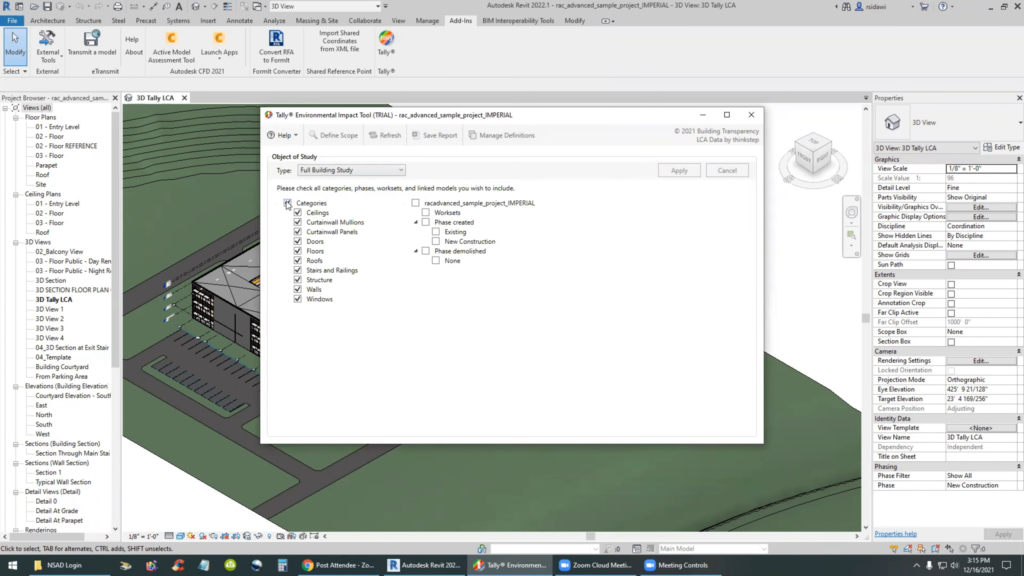
©VDC+BIM Rabi Sidawi
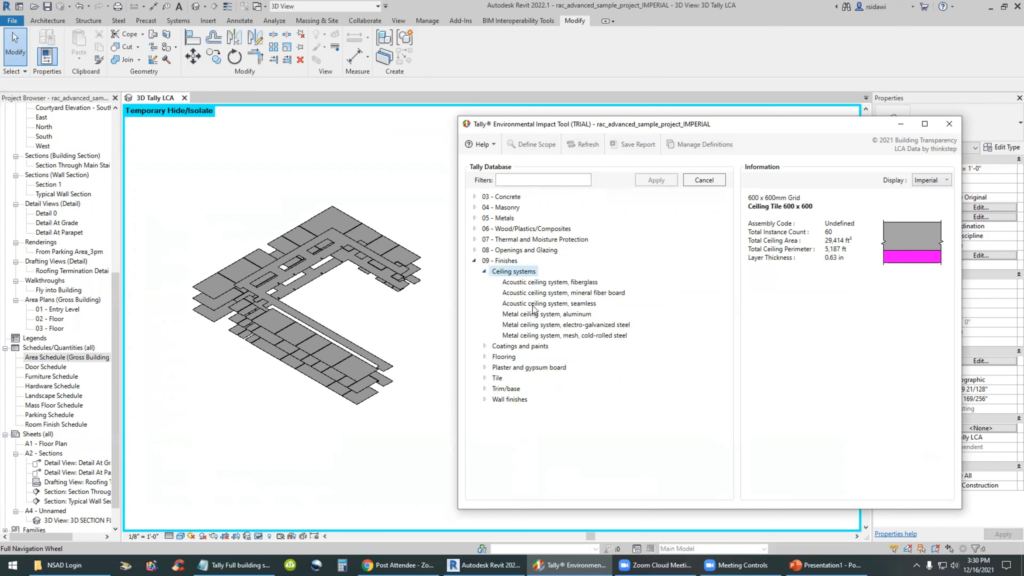
©VDC+BIM Rabi Sidawi
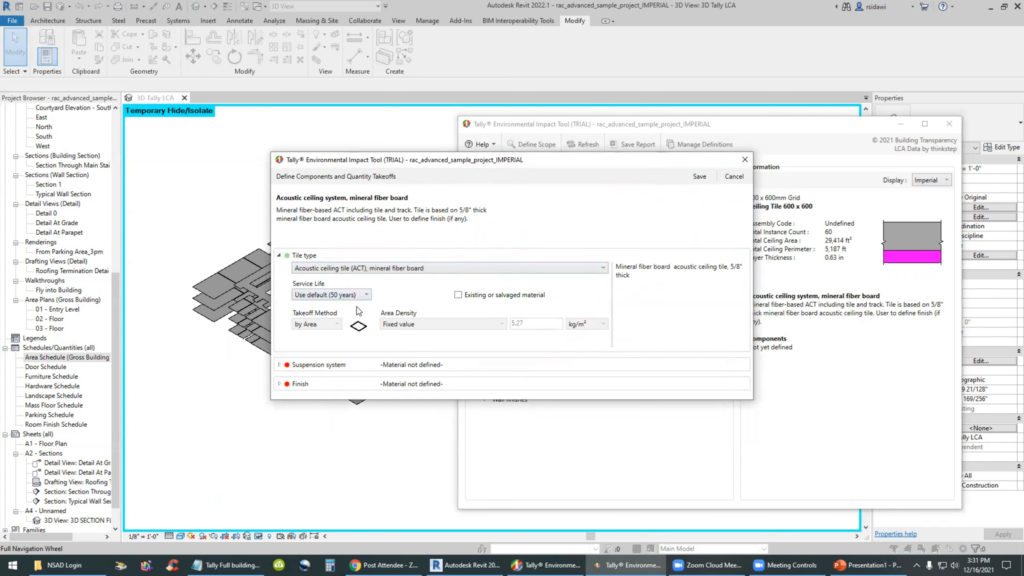
©VDC+BIM Rabi Sidawi
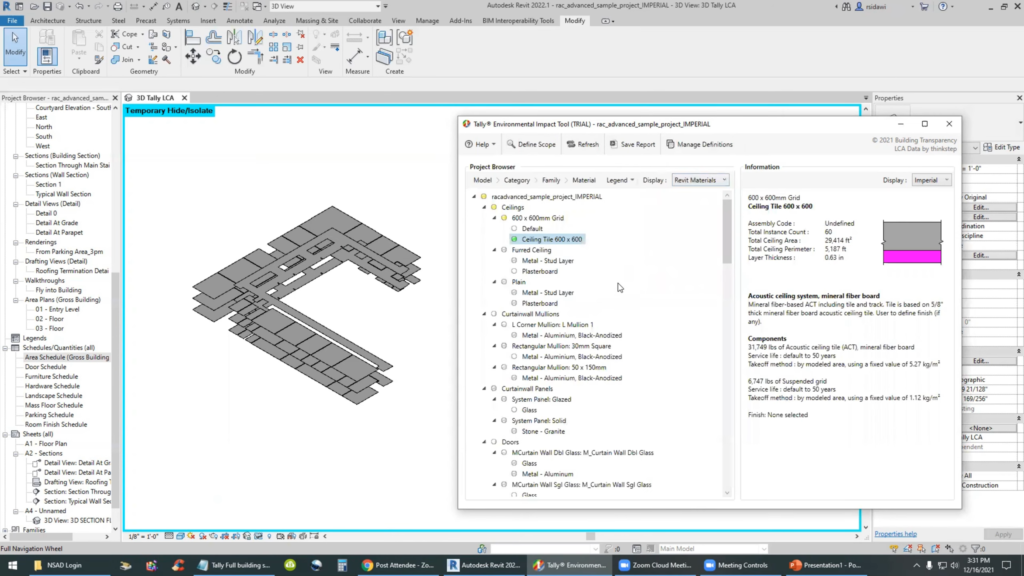
©VDC+BIM Rabi Sidawi
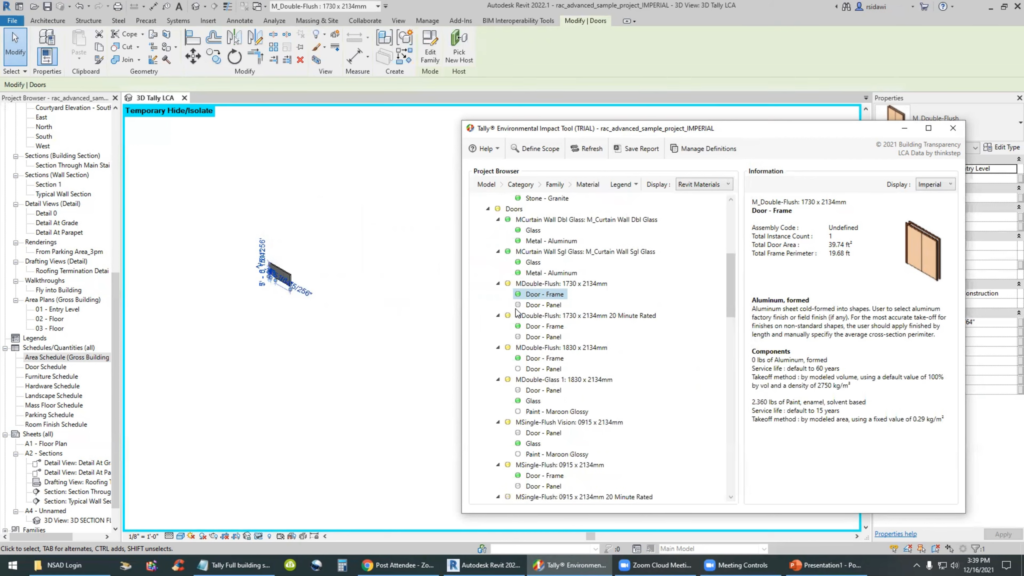
©VDC+BIM Rabi Sidawi
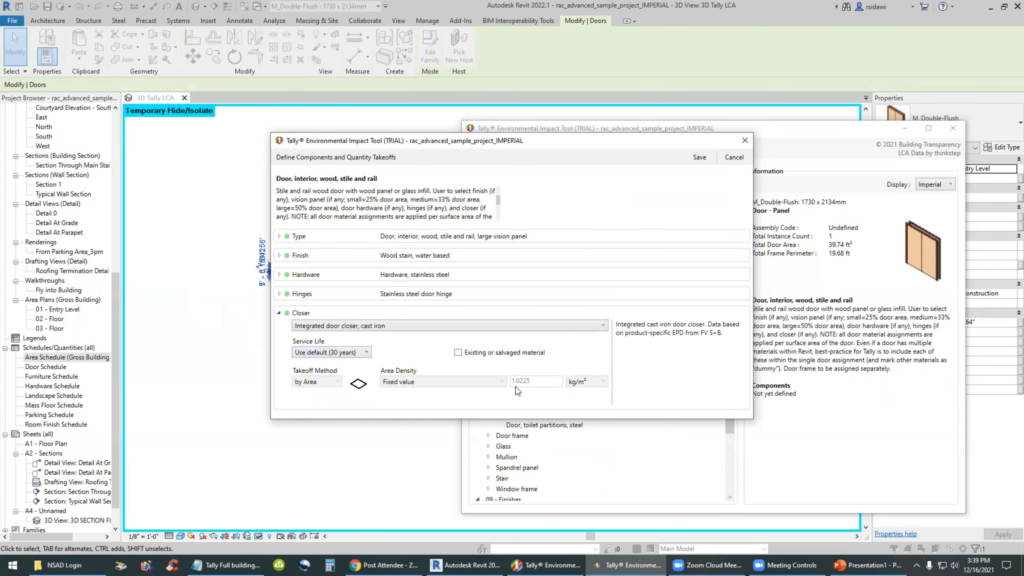
©VDC+BIM Rabi Sidawi
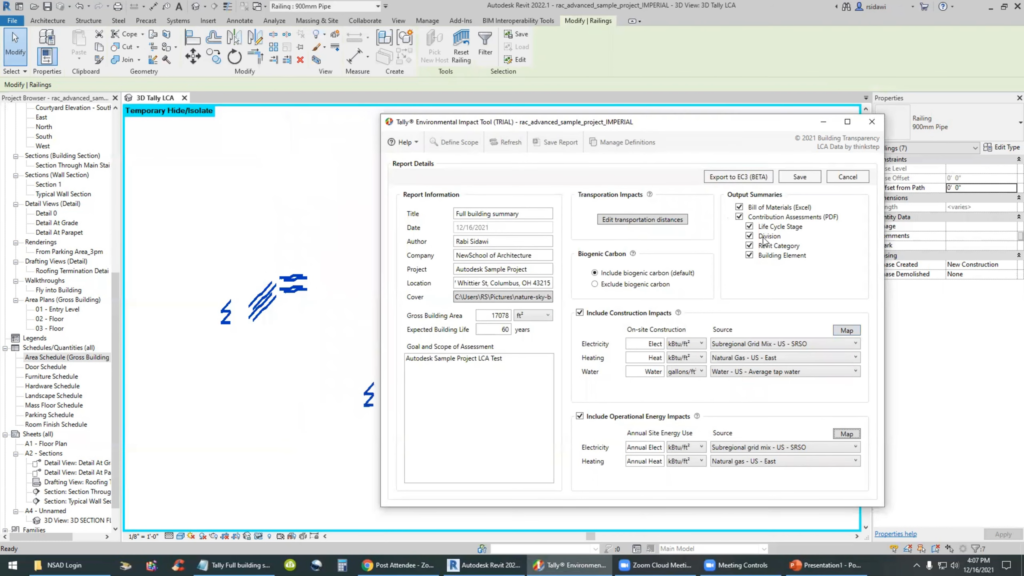
©VDC+BIM Rabi Sidawi

©VDC+BIM Rabi Sidawi
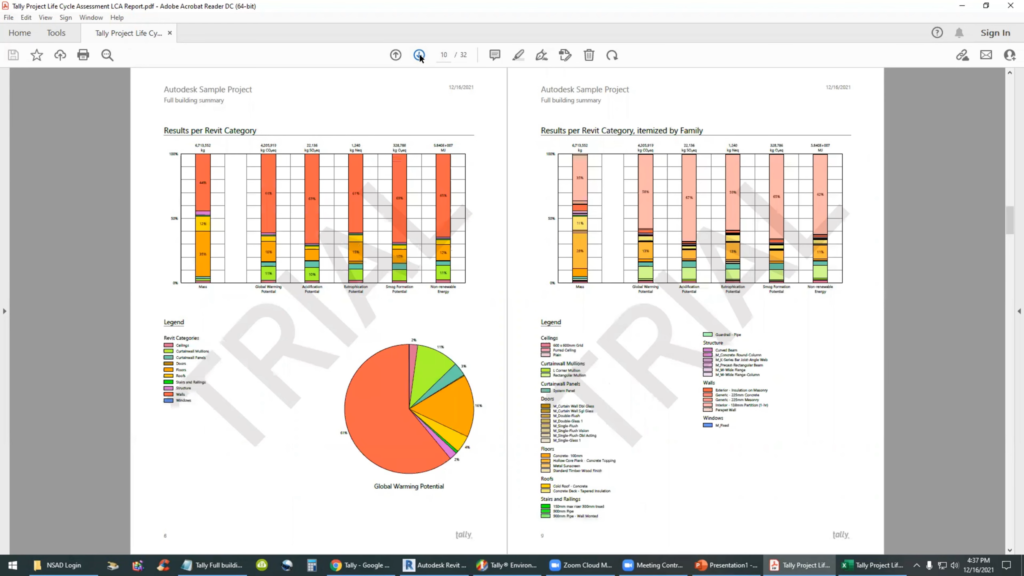
©VDC+BIM Rabi Sidawi